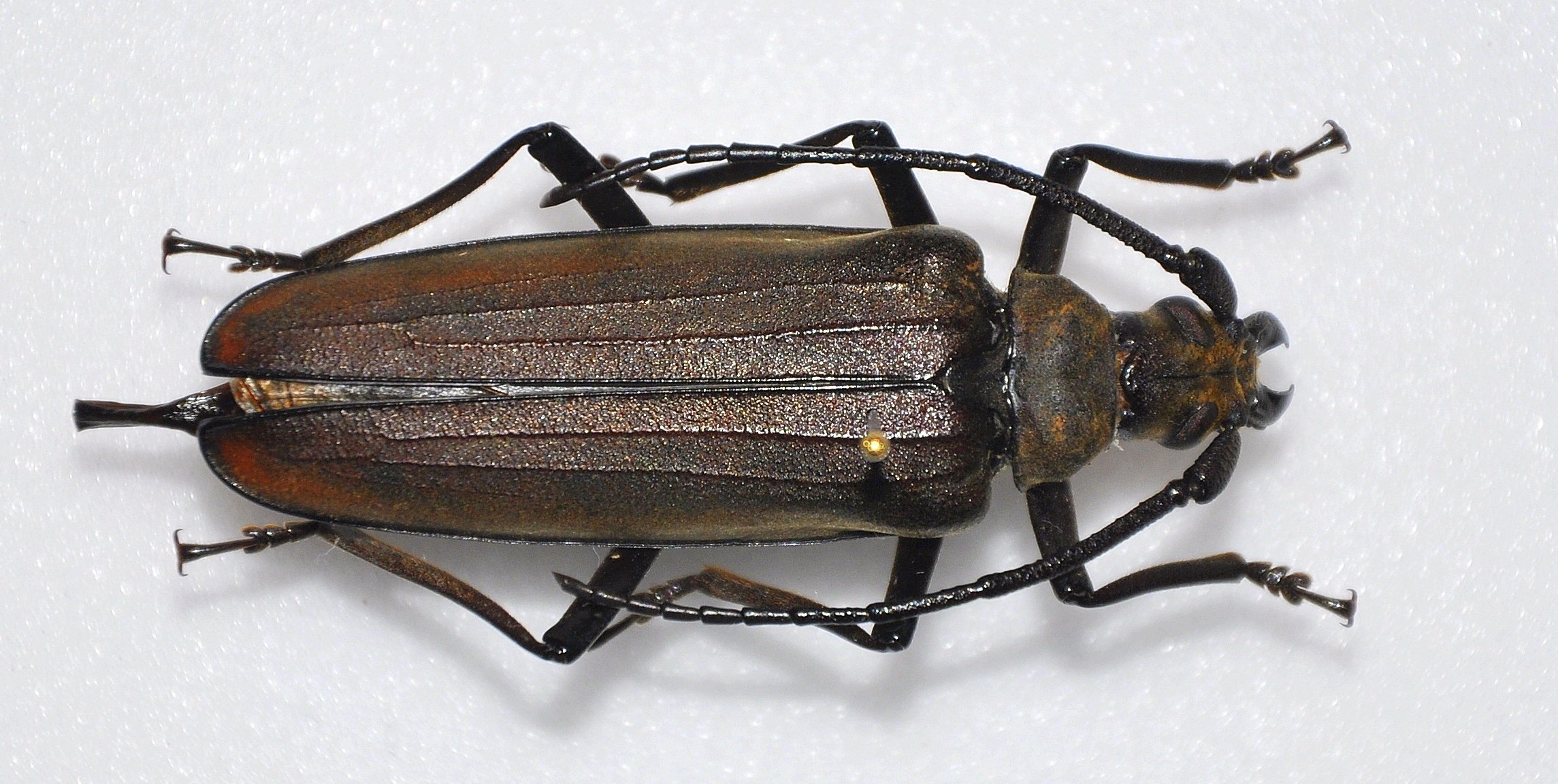| T O P I C R E V I E W |
| Pierre |
Posted - 01/03/2010 : 21:22:33

According to Gressitt, this one could be Megopis sulcipennis... what do you think?
Vietnam, 50 mm.
|
| 6 L A T E S T R E P L I E S (Newest First) |
| Francesco |
Posted - 04/01/2015 : 15:53:35
 Ok: common opinion... Ok: common opinion... |
| Xavier |
Posted - 04/01/2015 : 15:26:31
Exactly  , and I see that before Danilievsky (2011) -> MUKHOPADHYAY P. & HALDER S. K., 2004 !! , and I see that before Danilievsky (2011) -> MUKHOPADHYAY P. & HALDER S. K., 2004 !! |
| Francesco |
Posted - 04/01/2015 : 14:58:00
Yes, this combination (actually, the original one) has already been reintroduced by Danilevsky (2011) in this paper.
However, I am unsure which species is the present one. |
| Xavier |
Posted - 04/01/2015 : 14:33:12
Following Li & al., 2014, Aegosoma ornaticolle White, 1853 is bona species |
| Francesco |
Posted - 04/03/2010 : 09:19:02
According to me, it is a female of Aegosoma sinicum ornaticolle White, 1853, which differs from the widespread typical form in the pronotum having golden pubescence on the angles.
Two males are present in the gallery.
The exact status of this form (probably a true species) is still unclear, since its distribution areal is mostly superposed on that of the typical form. |
| Francesco |
Posted - 03/03/2010 : 15:04:36
I do not agree. According to Gahan (1906, p. 48), Megopis sulcipennis (White, 1853) should be a true Megopis, with short ovipositor in females (as M. mutica), while it is long in this species. According to Matsushita (1933 p. 163) M. sulcipennis should also have sparsely punctured antennae.
Hence this specimen is a female of Aegosoma, perhaps A. sinicum, but I have to check the exact species. |
|
|


